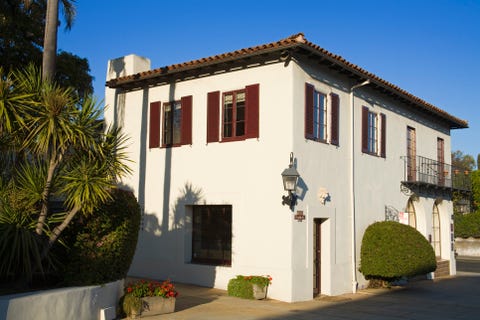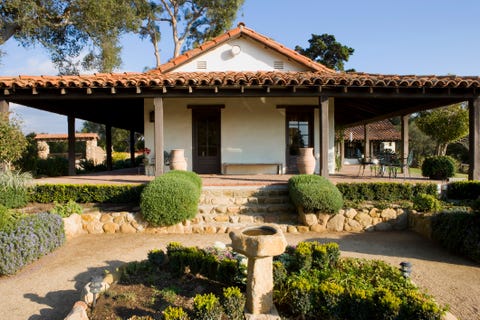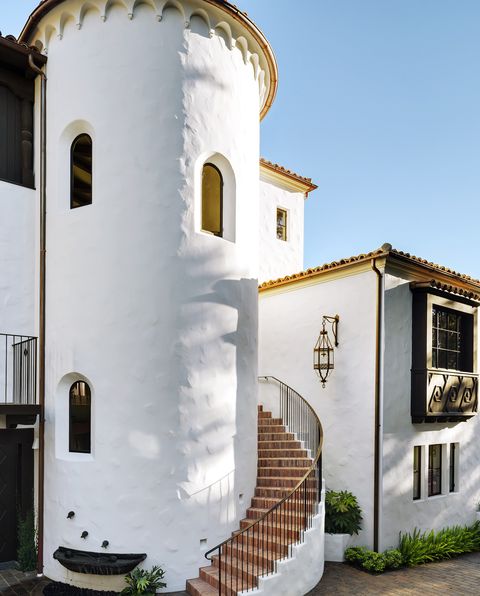British Colonial Style Decorating Ideas
As anyone who made it through third-grade American history may recall, the Brits had a bit of a political and cultural impact on the new world. British-inspired homes, for example, are so prevalent in the United States that they're just called "Colonial." But another nation's influence can be spotted throughout the country. Spanish Colonial homes were first built in the parts of America settled by Spaniards—namely Florida, California, and throughout the Southwest—from the 1600s to the mid-1800s.
Since the Spanish settled in areas with similarly temperate climates as their homeland, the houses they built were quite similar to those found in Spain. "As a matter of practicality, colonizing settlers merged building practices of their home nation with the local materials and tools available," explains Andrew Cogar, AIA, and president of Historical Concepts, an architecture firm based in Atlanta and New York that specializes in traditional yet modern homes.

Richard Cummins Getty Images
Since Spanish Colonial architecture was built across such a large geographic area with varying indigenous populations, the style has some regional distinctions as well. "Despite sharing the same Spanish cultural traditions and building techniques, the Southeast and Southwest had markedly different stylistic responses, based upon their specific geography and indigenous cultures," Andrew says.
What features make up Spanish Colonial style?
Even with these regional differences, Spanish Colonial homes share several distinct characteristics. The structures are built with very thick walls, typically white stucco over adobe brick or stone (which helped keep the houses cool), and have a limited number of small window openings; in early homes these tiny windows didn't have glass, just holes with wood shutters that opened and closed.

Fotosearch Getty Images
These homes are often L-shaped, with a central or side courtyard (a key feature of Spanish-style homes). Andrew points out that sometimes, the homes were a series of single rooms built onto the previous one with no internal hallway—as a result, colonists built "long, narrow external porches, called the corredor or portale, that lined the side-yard or courtyard," he says.
One of the most recognizable features is the red, barrel tile roof, which was low-pitched. In the Southwest, homes often have completely flat roofs with castle-like parapets lining the perimeter. Wooden doors accent the light stucco exterior walls and are sometimes arched, mimicked by arched doorways inside the homes. The interiors of Spanish Colonial homes innately have a casual, warm feel to them, since the raw adobe walls may not be covered with plaster or accented with trim, and wooden beams often serve as structural support along the ceilings.
Why we still see Spanish-style homes today
The Spanish colonization of western America lasted longer than the British claim on the 13 original colonies, but by the mid-1800s, the Spanish Colonial period in America came to an end. However, the architectural style persisted.

Trevor Tondro
Additionally, Spanish Colonial architecture was part of the Colonial Revival movement that spread all across the United States in the early 1900s as Americans grew fascinated with their colonial heritage. This time around, Spanish architectural elements (the white stucco exterior, red tile roof, etc.) were more of a choice than a necessity, emphasizing the beauty and old world feel of the materials that have become so closely tied with California casual style. Architects also drew on more specific iterations of Spanish Colonial style: Monterey-style homes (of Monterey, California) were noted for their distinctive second story porch that ran across the front of the house, Andrew says, as an addition to that original external breezeway. Mission-style architecture drew inspiration from the myriad churches built by Spanish settlers in California, and could be spotted by their use of arches and bell towers.
As Andrew notes, it's no surprise that this unique architecture style continues to be popular and to "capture the imagination of Americans as an ideal example for individual homes in temperate climate zones." Spanish Colonial Revival homes are still widely found (and built) throughout Florida and California, but also extending further into the Southeast and Southwest.
Follow House Beautiful on Instagram.
Maggie Burch Contributing Writer Maggie writes about interiors, real estate, and architecture for House Beautiful.
This content is created and maintained by a third party, and imported onto this page to help users provide their email addresses. You may be able to find more information about this and similar content at piano.io
British Colonial Style Decorating Ideas
Source: https://www.housebeautiful.com/design-inspiration/a25056763/spanish-colonial-design-style/
Posted by: owensthatimed.blogspot.com

0 Response to "British Colonial Style Decorating Ideas"
Post a Comment